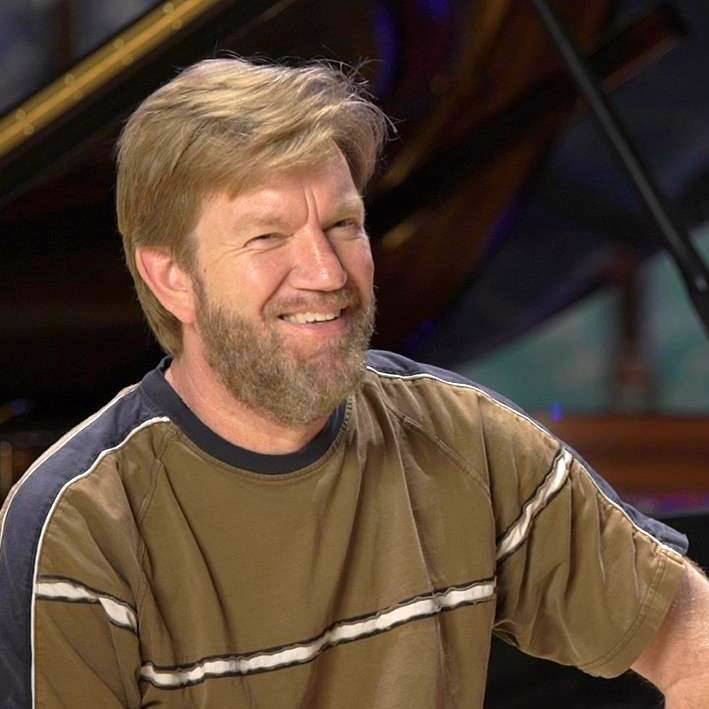Orchestral Maneuvers
The Cleveland Orchestra has built a UHD video system for indoor and outdoor use.
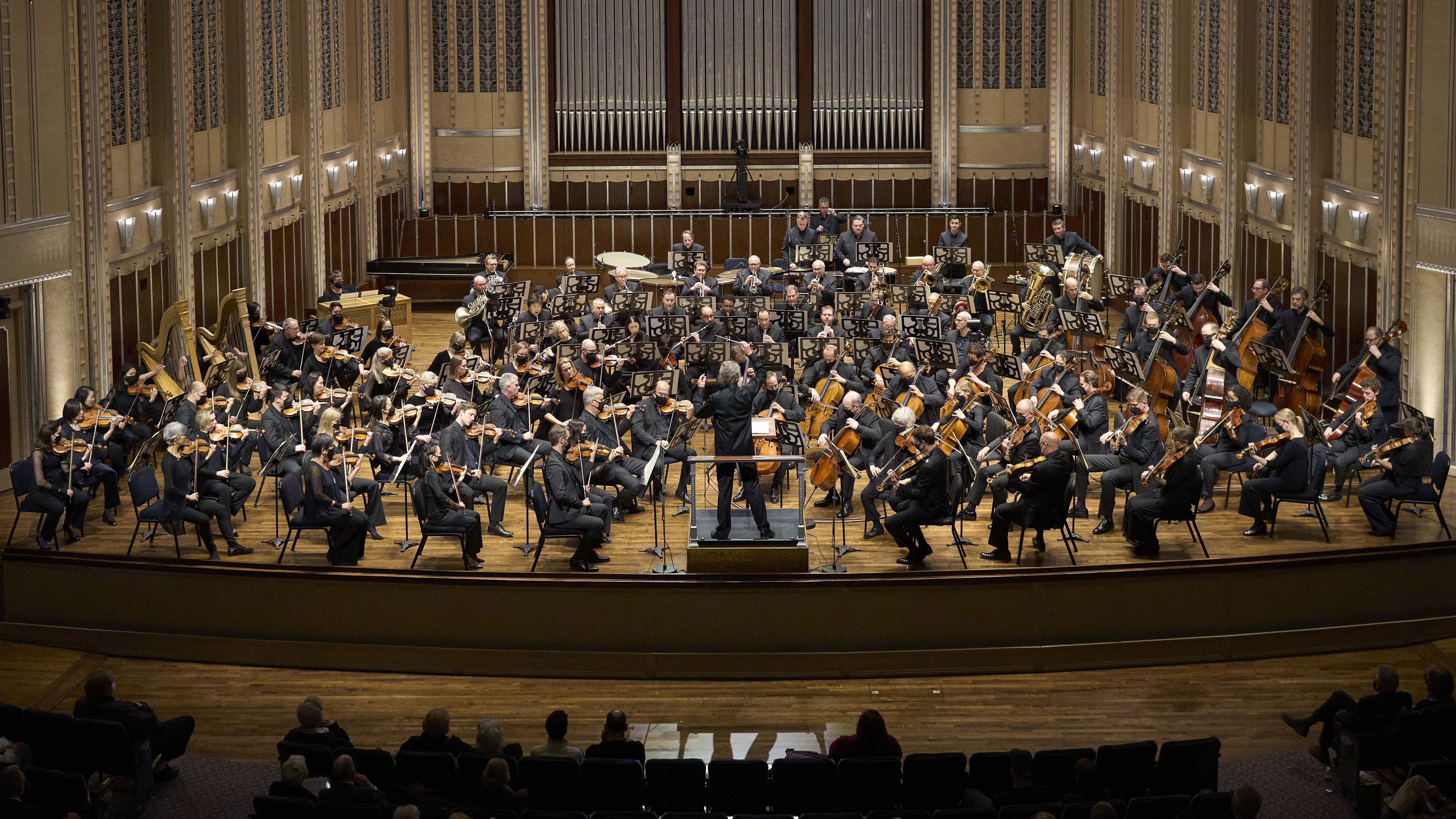
In the past couple of years, live performances have been greatly impacted by restrictions on audiences. Hardest hit have been venues for the arts that had little to no ability to produce video content for alternate distribution. The Cleveland Orchestra was no different.
Like many organizations with no video production ability, the Cleveland Orchestra looked at outside companies to come in and shoot a sometimes-smaller group of performers, so videos could be streamed across the internet to audiences at home. This worked for the first year, but the decision was made to install a permanent system to allow for continued video production, even post pandemic.

Kimaera Productions, led by Clyde Scott, is a consulting firm that specializes in innovative video and projection projects for leading arts organizations around the country. For the past 20 years, Scott has been the director of video for the New World Symphony on Miami Beach—a leading venue in concert presentation as well as video production—so designing a video system to capture orchestral performances was nothing new to him.
The facility at New World has one of the largest in-house UHD production systems in the nation, including 30 UHD cameras, a 144x144 12G router, and a 64x48 UHD switcher. The video system at New World has been used for many productions, from its own orchestral performances to PBS specials, and even a national program on CBS in early 2021.
I worked as chief video engineer for Scott at New World, and together we completed a multi-million redesign and UHD upgrade of the video and projection systems. I also continued working with him through Kimaera as he consulted with different orchestral organizations, including designing a new UHD video system for the San Francisco Symphony. When the opportunity to create a UHD video system for Cleveland Orchestra, Kimaera was thrilled for the opportunity.
Checklist of Challenges
The challenges were significant in many ways—including working in Severance Hall, a beautiful concert hall built nearly 100 years ago when video, let alone fiber, was only in sci-fi stories. Pandemic issues minimized work force as well as product availability. The turnaround time for completion was only a few months, because the ability to capture the upcoming season’s performance was a requirement. The UHD system needed “zero” visible latency. And the system had to be portable, so it could be used at the orchestra’s summer venue, the Blossom Music Center outdoor amphitheater.
A daily selection of the top stories for AV integrators, resellers and consultants. Sign up below.
Operational design was also a challenge. A large portion of the cameras would need to be robotically controlled, but the cabling couldn’t be so complicated that a half-day set-up wasn’t possible. After much consideration, the right solution was built on Panasonic’s ability to control its own gear via TCP/IP.
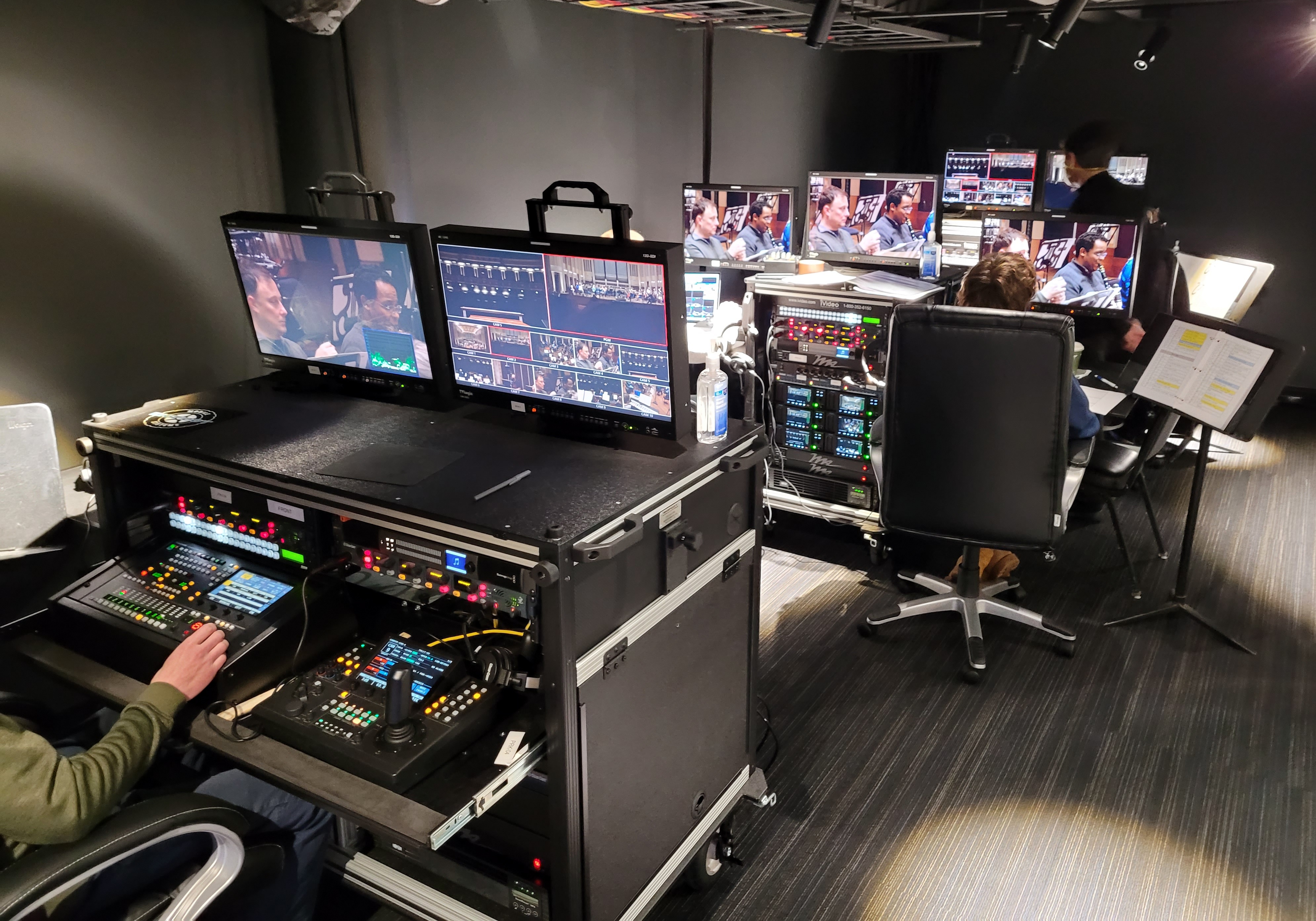
The project began with careful review of the facility to determine where a control room could live in a 90-year-old building, along with determining how to integrate a fiber infrastructure (both single mode and SMPTE) into the structure with no destruction of any of the incredible architecture. Camera locations for robotics had to be chosen so the 120+ strands of SM fiber could be laid, with power installed at these locations as well.
[DiGiCo Solutions Provide Minnesota Orchestra's Orchestra Hall Wide Ranging Flexibility]
Kimaera designed a system that would start with a permanent install of fiber and cabling with the first two of six racks in the future permanent tech core. Then came four portable racks, all with interconnecting harnesses and bulk service panels (BSPs) to allow easy connections when used at remote sites. Cleveland-based iVideo was selected to oversee the detailed design and drawings of the install under the technical leadership of Ed Strickland.
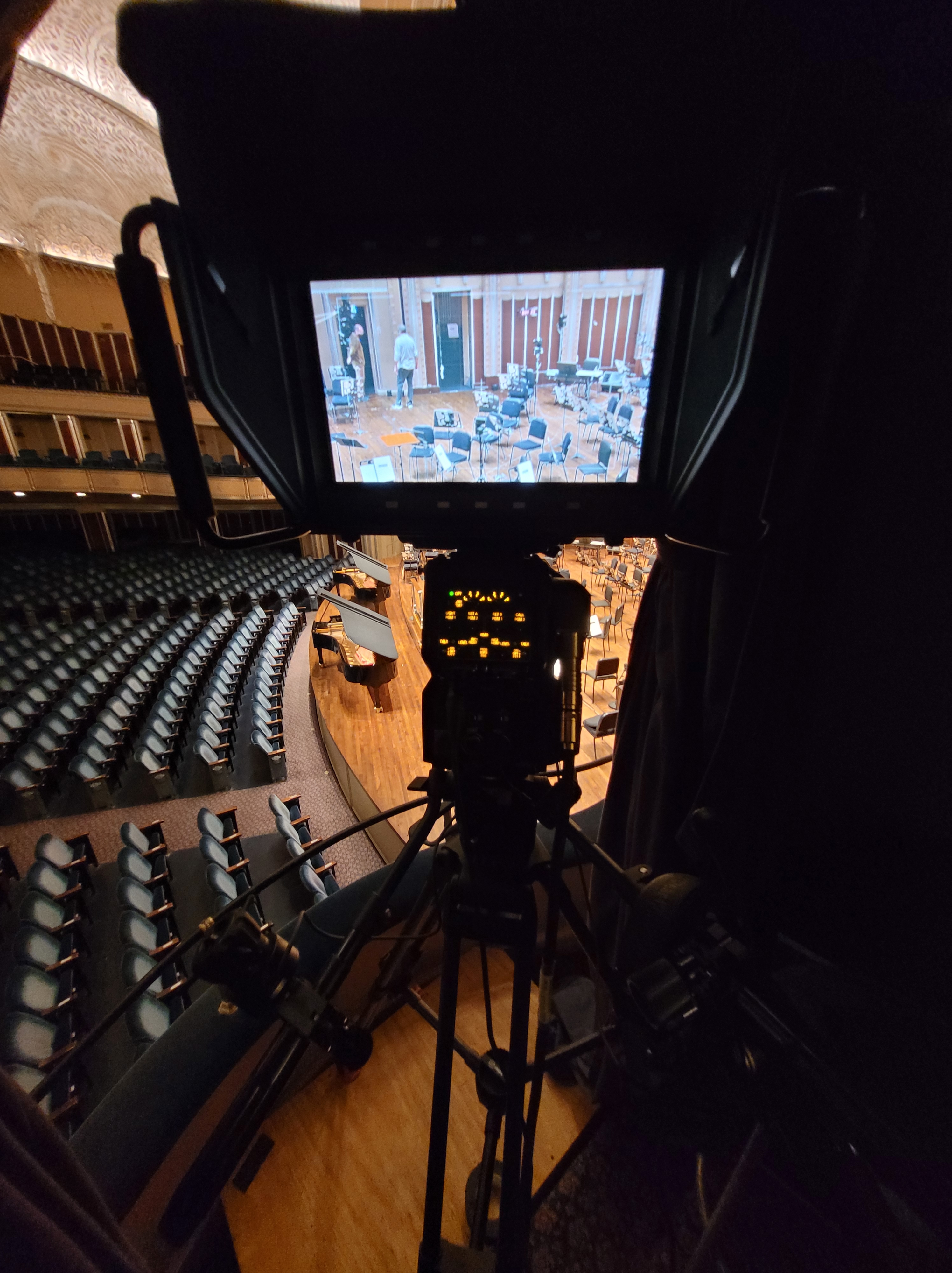
Since the system also would provide SMPTE time code to the existing audio department for Pro Tools recording, the sync generator design would include a primary and secondary with auto-changeover system. The primary sync generator would be in a portable rack with the switcher and router, while the secondary sync generator would live in a permanent rack with the auto-changeover system and fiber gear. As a result, time code could always be provided to the audio department, even when the portable video system and primary sync generator were on location. Due to Phase 1 limitations of no large-scale storage system (in the petabyte range), we lowered the frame rate to 29.97 in UHD.
The primary manufacturers involved included Panasonic, which provided a UHD switcher with 16/9 I/O, box camera, two ENG (manned) cameras, and seven PTZ cameras, as well as robotic controllers and the master shading system. Ross Video was selected for its sync generator, OpenGear frames, and Ultrix 12G 72x72 router. MultiDyne is used for 12G, sync, 422, and Ethernet over fiber. AJA provided some small 12G fiber gear and 10 Ki Pro Ultra 12G UHD recorders, while ClearCom was chosen for its TCP/IP based VoIP intercom system.
In the Amphitheater
Four portable “production racks” and a single “tech rack” make up the portable system. Designed for the director and TD, the first rack houses the router, switcher, and primary sync generator, plus a router control, two TV Logic UHD monitors, and intercoms. The second rack, a double producer/score reader station, includes four KiPro UHD recorders, two TV Logic monitors, and router control.
The third rack features two robotic controller stations, with one equipped with a programmable Tecnopoint control system, plus the necessary intercom, monitors, etc. The fourth rack is the shading rack, with master shading and a third robotic controller, as well as additional gear and two CCUs for the manned cameras. The tech rack holds additional MultiDyne gear for 12G-to-fiber conversion.
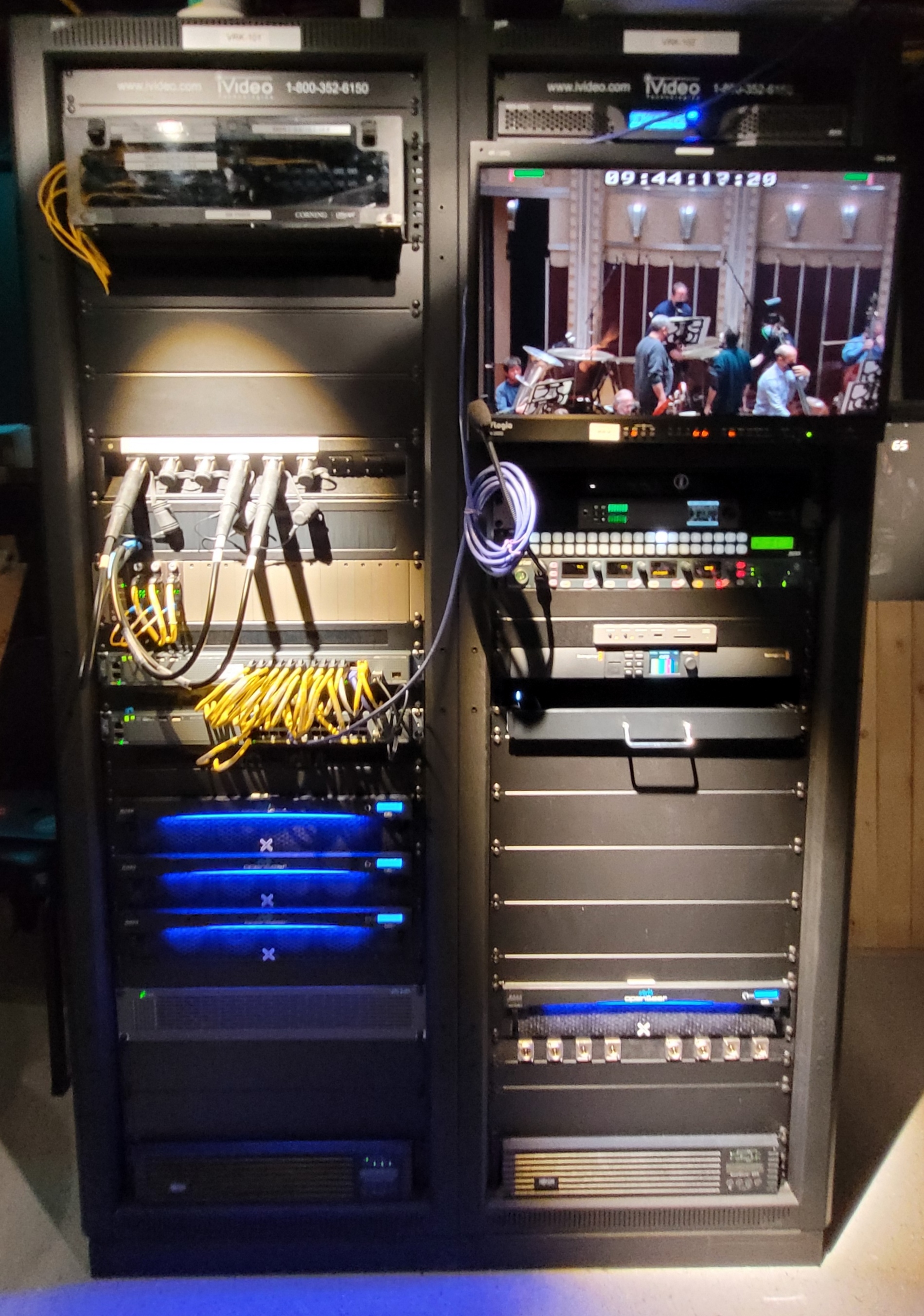
All racks include intercom panels, 1Gig network switches, bulk service panels for interconnects, UPSs and power distribution, router control, and full UHD monitoring. Since intercom is VoIP and the production gear is all based on TCP/IP, the system was designed to keep isolation between the router/video network and intercom networks.
The critical aspect related to the choice of Panasonic was the ability for the master shading panel and the three robotic controllers to receive full tally info from the switcher, plus for robotics and shading to control auxiliary outputs of the switcher so that any cameras selected on their respective panels would automatically switch the appropriate aux output and feed that signal to their monitor. Between the tally function and automatic video switch selection to the monitor, all over TCP/IP control, this greatly simplified wiring by negating the need for GPIO interfacing.
A Question of Cables
When working with UHD in the 12G world, the consideration is always keeping any copper to a length far below what manufacturers may suggest for distance limitations. You also need to be sure all BNCs and cable are specifically rated for 12G, and that no cable ties or turn impact the integrity of the copper cable. Cable length will vary based on which cable is used, but generally speaking, most copper connections are all kept under 200 feet, with all distance runs done over single-mode (SM) fiber.
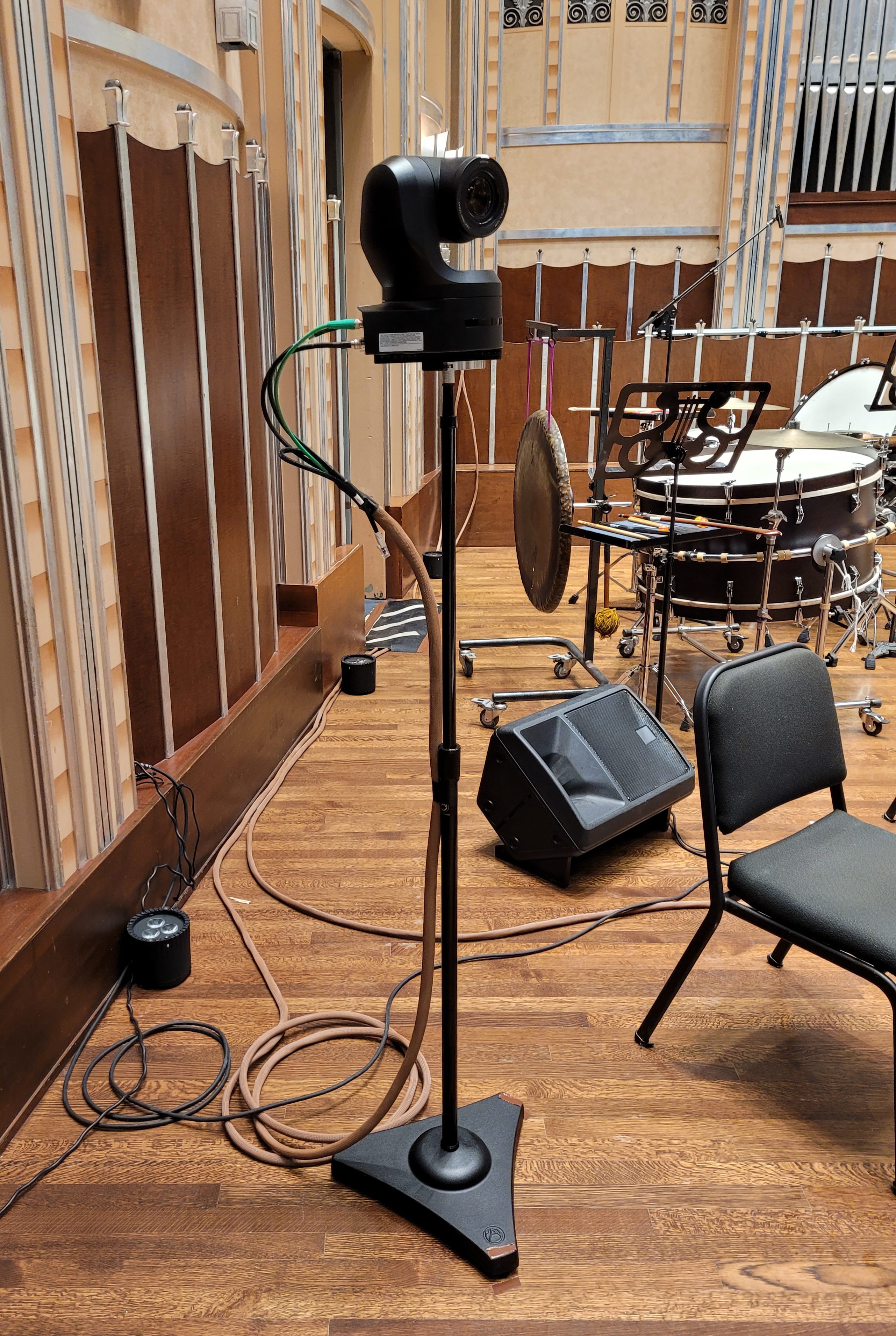
Due to the nature of the remote system and distance variation from control room to cameras, single mode tactical fiber on 1,500-foot spools allow for flexibility to the stage cameras, and the EFP manned cameras use the standard SMPTE LEMO fiber system. This allows the flexibility needed when this system goes to remote locations, such as Blossom Music Center.
The concert hall installation utilizes multi-conductor reels that interface with side and backstage BSPs tied to the MultiDyne gear, and this system is duplicated in a portable configuration as well. The multi-conductor reels include 12G video cable, sync, and Ethernet (with POE++). To maintain signal stability, the reels are 125 feet with 20-foot interfacing cables (between the side of the reel and the bulk service panel). These reels are also used in the portable configuration to get the signal from the stage to the offstage fiber interface locations.
Since unscripted live portable productions present more challenges for robotics, the system was pre-wired for a third CCU and third manned EFP camera. This allows the portable configuration to use up to six robotic cameras (with one on a Tecnopoint track for horizontal movement using its Tuning Floor Dolly, plus vertical movement with its Totem 50 robotic pedestal), plus three manned EFP cameras. The same 10 AJA KiPro Ultra 12G recorders are available for use with the system whether used in-house or portable.
We look forward to taking this system on the road for both content recording and I-MAG (image magnification) use. And we’re already planning ahead for Phase II, which will include a permanently installed control room.
Dan Slentz is the chief video engineer for the Cleveland Orchestra.
